Alouette 3 Helicopters

This is the site dedicated to the networking of owners and operators of
Alouette 316 and 319 helicopters.
|
|
Click Here to Search This Site
"Offshore projects require tremendous lead time and planning, so the move to more helicopters just doesn't happen quickly," he said.
If helicopter manufacturers ever break the price and speed barriers, though, most experts say new uses for helicopters will take off. For now, a helicopter that carries just eight passengers can cost $8 million to $10 million, while one big enough to carry 19 can exceed $16 million. Moreover, the fastest copters rarely exceed 145 miles per hour or range much farther than 450 miles. - New York Times 11/04
But ....
The Alouette 3 - will carry 6 Passengers or 2 stretchers and 2 medics (or 2,200 lbs of stuff), travel at 145 MPH, has 425 Miles range, will fly from sea level to the top of the Himalayas and all for less than 300K!

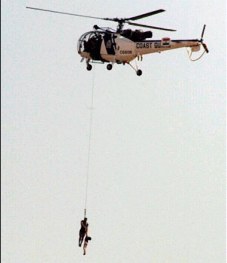
Alouette 3's provide emergency relief in Indonesia - 12/2004
Robinson R22 and Robinson R44 Helicopters for sale
Rebuilt R22 Beta II - 0 Hrs SMOH - $185,000
R44 Astro Hrs SMOH
Also complete parts inventory - www.robinsonhelicopterparts.com
| General Information & History |
| Aircraft for sale - Complete aircraft wanted for parts! |
| Pilots & Mechanics |
| Links |
| Bell 47 |
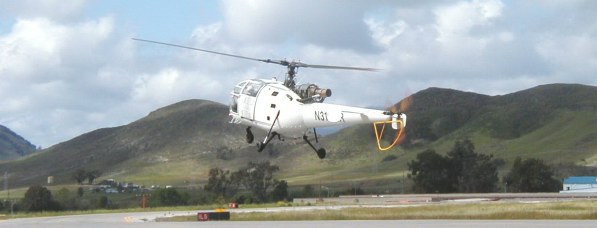
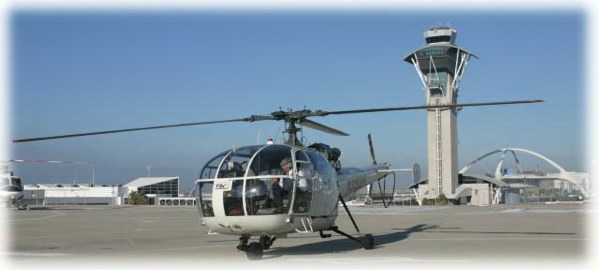
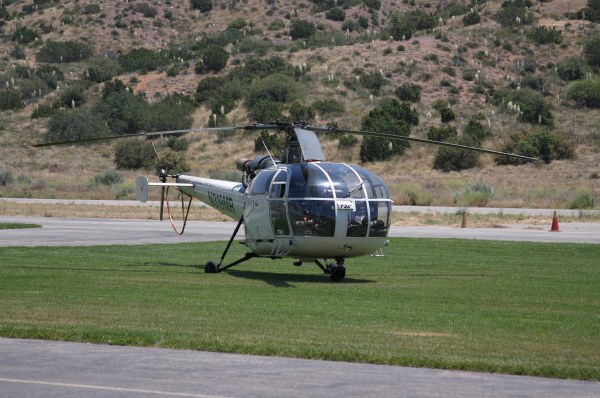


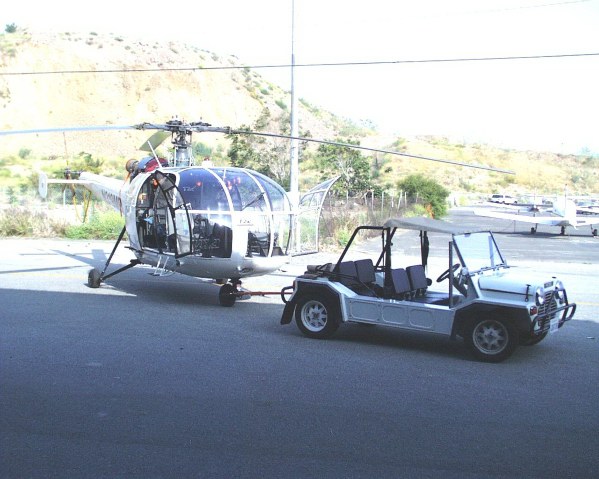


LENGTH (m) : 12.84
HEIGHT (m) : 3.00
MAX T-O WEIGHT (kg) : 2200
MAX LEVEL SPEED (knots) : 120
MAX RANGE (nm) : 267
SERVICE CEILING (m) : 3200
HOVERING CEILING (m) : 2850
MAX RATE CLIMB (m/min) : 260

3,244 helicopters were built (Alouette 2, 3 & Lamas) - of these 1,327 are still in service as of 2002!
Indonesian Air Transport flies #1762 and has logged over 21,000 flight hours.
The fleet logged 255,000 flight hours in 2002.
As of 2004 - 1250 Alouette family still in service.
Fleet logged 22,900 hrs in 2004
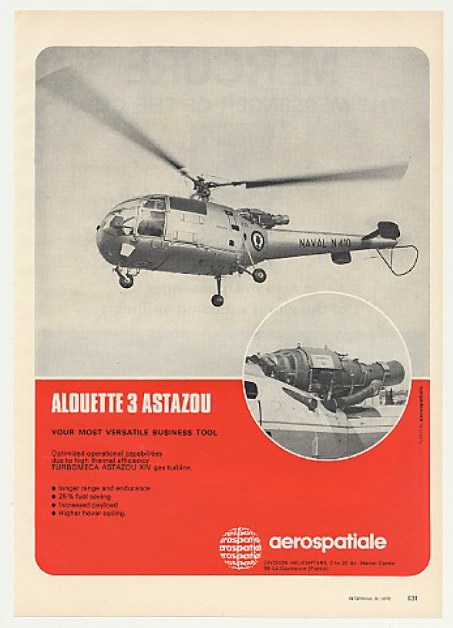
Alouette III helicopter was developed from the Alouette II, with larger cabin, greater power, improved equipment and higher performance. The prototype flew for the first time on 28 February 1959, and a total of 1,455 Alouette IIIs had been delivered for civil and military operation in 74 countries by 1 May 1985 which was the final year of production by Aerospatiale, although Brasov of Romania continued manufacturing the SA 316B for a short period. All Romanian production has now ceased. Those aircraft delivered before 1969 were designated SE 3160. The subsequent Artouste-engined SA 316B has strengthened main and rear rotor transmissions, higher AUW and increased payload. It flew for the first time on 27 June 1968; first deliveries were made in 1970, and this version received FAA Type Approval on 25 March 1971. The SA 319B, with Astazou engine, is described separately, but is included in the total sales figure above. The sale of Alouette IIIs to India, Romania and Switzerland included licence agreements for manufacture of the aircraft in those countries. Quantities involved were 250 in India, 180 in Romania and 60 in Switzerland. In 1977, an SA 316B operated by Trans North Turbo Air for the Canadian Park Service evacuated a mountain climber, suffering from pulmonary edema and frostbite, from a point at the 4,235 m (13,900 ft) level on the east ridge of Mount Logan. This is thought to be the greatest height at which a hoist rescue has been effected.
The Aerospatiale Alouette III - The French translation of Alouette is "Lark"
Basically, the SE.3160 Alouette III is an enlarged and more powerful development of the Alouette II, with an Artouste turboshaft engine and a strengthened transmission system. The cabin is enlarged to accommodate a pilot and 6 passengers, and the tailboom is an enclosed, semi-monocoque fuselage. First flown on 28 February 1959, the Alouette III embodied several of the features seen during the preceding two years in earlier Sud-Est designs. First of these to fly, on 10 May 1957, was the SE.3131 Gouverneur (F-WIEA), which was basically an Alouette II with an Artouste engine, covered fuselage and executive cabin seating 5 occupants including the pilot. The SE.3140, flown on 16 May 1957 was fundamentally a Turbo-engined Alouette II and the SE.3150 an Artouste-powered development of it.
Series production of the Alouette III began in 1961, after two prototype and two pre-series machines had been built, and the aircraft received domestic type approval on 12 December 1961. By mid-May 1968, four hundred and ninety French-built Alouette Ill's had been ordered, and Hindustan Aeronautics Ltd. have a licence to build a substantial number for the Indian forces. Most Alouette Ill's are for military customers: the Swiss Army (twenty-four) and Royal Danish Navy (eight), and the air forces of Australia (fourteen), Burma (thirteen), Burundi (one), Cambodia (two), Congolese Republic (five), Dominican Republic (one), Eire (three), Ethiopia (five), Hong Kong (two), India (thirty-seven), Ivory Coast (two), Jordan (seven), Lebanon (seven), Malaysia (twenty-three), Mexico (four), Nepal (one), the Netherlands (seventy-seven), Pakistan (eight), Peru (four), Portugal (fifty-four), Rhodesia (eight), Rwanda (two). South Africa (fifty-four), Tunisia (four), Venezuela (twenty) and Vietnam (two). In France, the ALAT is the prime user, though the Armee de I'Air has three, the Aeronavale has sixteen aboard the carrier Jeanne d'Arc, and others are used by the Gendarmerie.
Duties of the Alouette III include those of tactical or assault transport, flying crane (with 750 kg external sling load) or casualty evacuation (with 2 passengers and a stretchers carried inside the cabin). A close-support version, the SA.3164 Alouette III Armee, was flown on 24 June 1964. This carried a 20mm cannon in front of the left-hand seat, and can be armed with 7.92mm machine-guns, pods of 18 or 36 HVAR rockets or Nord AS.11 or AS.12 anti-tank missiles on mountings on each side of the cabin. A naval version with a mooring harpoon and all-weather capability is being developed for anti-submarine and other shipboard roles.
K.Munson "Helicopters And Other Rotorcraft Since 1907", 1968
* * *The Alouette III, developed in the mid fifties, is a streamlined, rather elegant aircraft with an extensively-glazed cabin to accommodate seven. The dynamic components are derived from its predecessors and it has a 870shp Artouste III turbine derated to 550shp. The usual skid landing gear has been replaced by a fixed tricycle undercarriage.
The prototype made its first flight on 28 February 1959 and immediately aroused the interest of the French forces, who needed a fast, well-armed machine for the war in Algeria. Various weapons fits were examined and, apart from a number of fixed or flexible weapons, provision was made for the installation of wire-guided missiles.
Thus equipped and with a maximum speed of approximately 210km/h, the Alouette III suited the armed forces' requirements very well. After it had been in production for three years, Sud-Aviation built a prototype expressly designed for armed missions, with a 20mm cannon in the redesigned nose. However, its performance was inadequate for a combat helicopter and, moreover, by that time the war in Algeria had ended.
At the end of 1970, the SA.316B version with strengthened transmission was introduced, and in 1972 the SA.316C went into production with the new 870shp Artouste HID turbine derated to 600shp. Another variant which adopted an Astazou XIV turbine with the same power rating was designated the SA.319B. This last version, which was in production in the seventies, had much higher capabilities with a 25 per cent reduction in specific fuel consumption. Construction of the SA.316B and SA.319B continued for many years in France and was also extended to India, Pakistan, Romania and Switzerland, where a number of both civil and military models have been manufactured under license. By spring 1976, over 1350 Alouette III helicopters had been built and sold to 120 operators in 69 countries.
The helicopter was also adapted for naval use and was equipped with better navigational aids — Doppler radar, a navigation computer, autopilot and two homing torpedoes for ASW. In the antiship role, it carried two missiles.
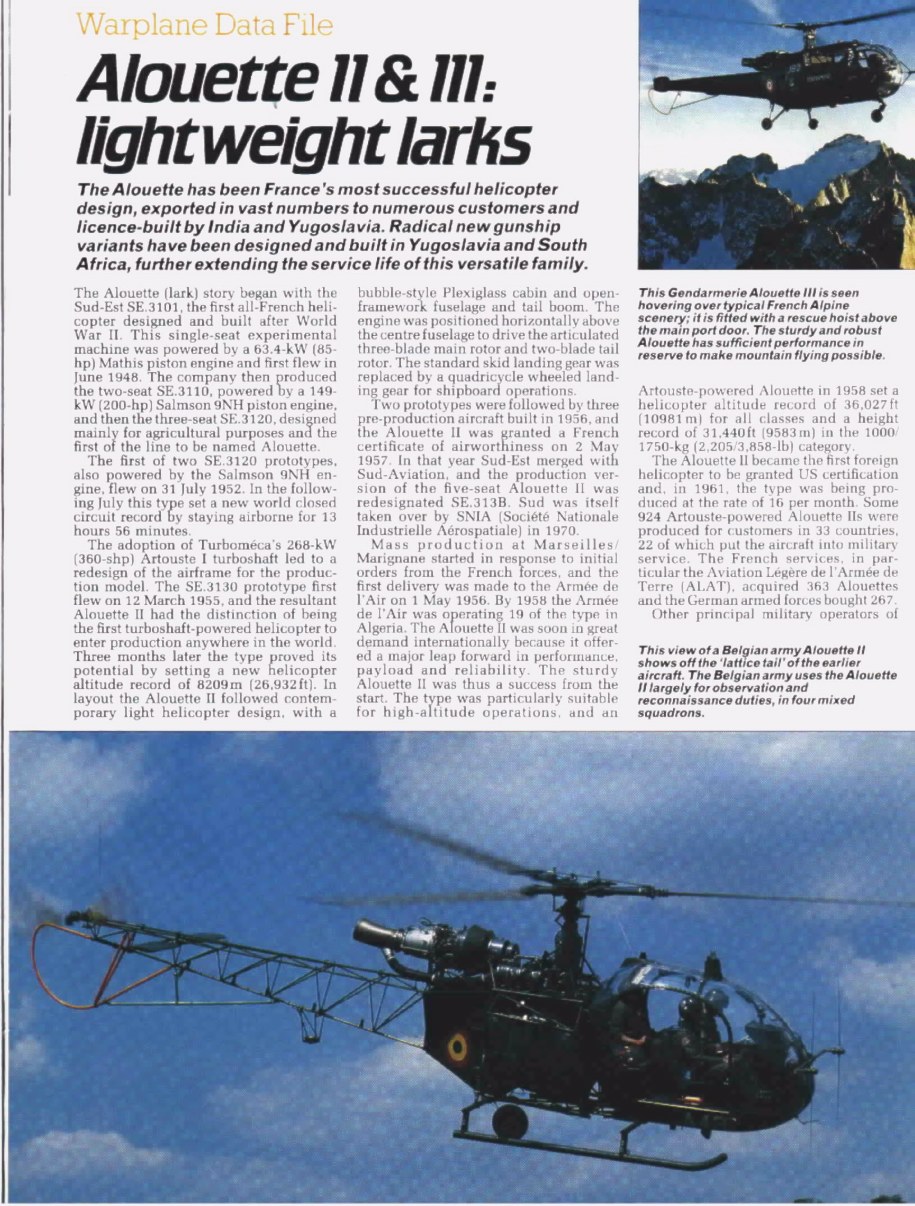

Contact Mark Rowlands at (818) 557 0903 or Email Mark@t2k.com
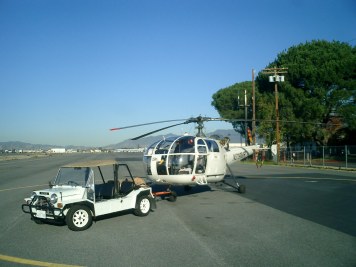
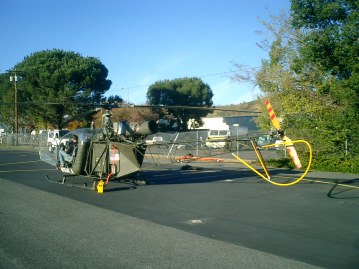
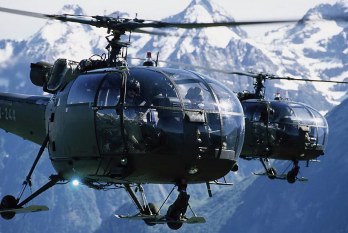
General Specifications
|
|
| First Flight : | February 28, 1959 (SA-316), 1967 (SA-319) |
| Type : | |
| Engine | 1 turbine Turbomeca Astazou XIV of 870 CV (SA-319) |
| Capacity : | |
| Production : | |
| more than 75 | |
Dimensions
|
|
| 10,03 m | |
| 12,84 m | |
| Height : | 3,09 m |
| 11,00m | |
| Empty weight : | 1108 kg (SA-319) |
| Max. weight : | 2250 kg (SA-319) |
Performances
|
|
| 220 km/h (SA-319) | |
| 4250 m | |
| Range : | 600 km (SA-319) |
 |
